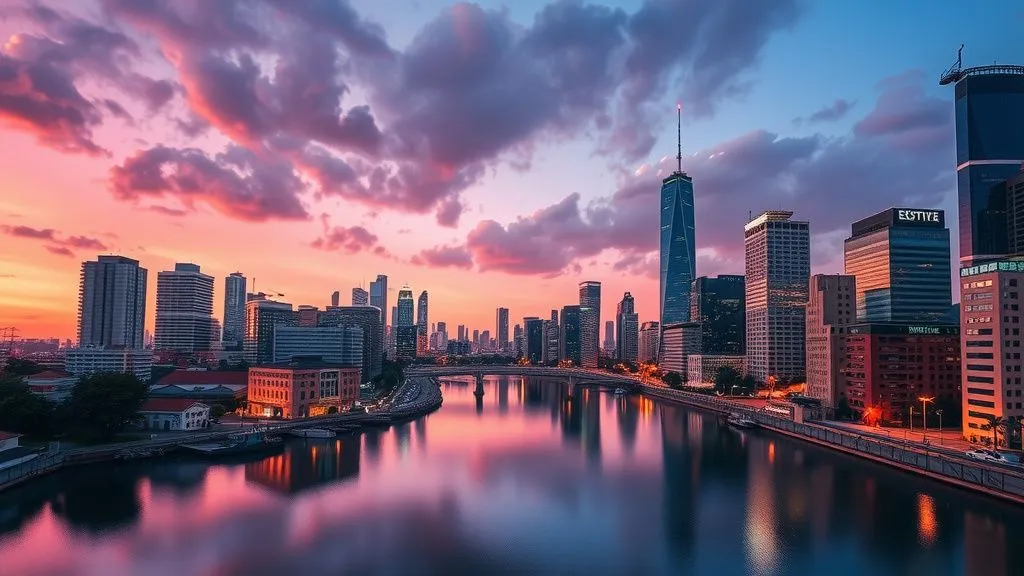Biodiversity Projects
When it comes to preserving the planet's natural resources and protecting the diversity of life on Earth, biodiversity projects play a crucial role. These projects aim to promote conservation efforts, restore habitats, and raise awareness about the importance of biodiversity. In this article, we will explore some notable biodiversity projects around the world and their impact on our environment.
The Great Barrier Reef Marine Park
The Great Barrier Reef Marine Park is one of the most famous biodiversity projects globally, located off the coast of Queensland, Australia. This massive marine park covers an area larger than Italy and is home to a diverse range of marine species, including corals, fish, turtles, and whales.
To protect this fragile ecosystem from human activities and climate change impacts, the Australian government established strict regulations within the marine park. These regulations include fishing restrictions, pollution control measures, and sustainable tourism practices.
Through these conservation efforts, the Great Barrier Reef Marine Park has become a symbol for global biodiversity conservation and a UNESCO World Heritage Site.
The Gorongosa National Park Restoration Project
In Mozambique's Gorongosa National Park, an ambitious restoration project is underway to revive its rich biodiversity after years of conflict and poaching decimated animal populations. The Gorongosa Restoration Project aims to restore wildlife populations by reintroducing key species like elephants and lions while also supporting local communities through education and sustainable development initiatives.
This project has not only led to significant increases in wildlife numbers but has also helped improve livelihoods for nearby communities. By involving local people in conservation efforts, the project has fostered a sense of ownership and stewardship, ensuring the long-term sustainability of the park's biodiversity.
The Amazon Rainforest Conservation Initiative
The Amazon rainforest is often referred to as the "lungs of the Earth" due to its role in producing oxygen and regulating the global climate. However, deforestation and illegal activities pose a significant threat to this vital ecosystem.
The Amazon Rainforest Conservation Initiative is a collaborative effort between governments, NGOs, and indigenous communities to protect and restore this unique rainforest. Through sustainable land-use practices, reforestation projects, and community engagement, this initiative aims to curb deforestation rates and safeguard the biodiversity of the Amazon.
By empowering local communities and providing alternative sources of income such as eco-tourism or sustainable agriculture, this project not only protects biodiversity but also contributes to poverty alleviation in the region.
The Serengeti Lion Project
Lions are an iconic species that symbolize Africa's rich wildlife heritage. However, their populations have been rapidly declining due to habitat loss, poaching, and human-wildlife conflict.
The Serengeti Lion Project focuses on studying lion behavior, population dynamics, and their interactions with other species in Tanzania's Serengeti National Park. By gaining a better understanding of these majestic predators, conservationists can develop targeted strategies for their protection.
This project also works closely with local communities to mitigate conflicts between humans and lions. By implementing measures like building predator-proof enclosures for livestock or providing compensation for lost animals, they aim to promote coexistence between humans and wildlife while safeguarding lion populations.
The Coral Triangle Initiative
Spanning six countries in Southeast Asia – Indonesia, Malaysia, Papua New Guinea, the Philippines, Solomon Islands, and Timor-Leste – the Coral Triangle is a globally significant marine region known for its unparalleled biodiversity.
The Coral Triangle Initiative aims to protect and sustainably manage this marine hotspot by addressing various threats such as overfishing, habitat destruction, and climate change impacts. Through collaborative efforts between governments, NGOs, and local communities, this initiative promotes sustainable fishing practices, establishes marine protected areas, and enhances coastal resilience.
Conclusion
Biodiversity projects are vital for preserving our planet's natural heritage and ensuring the long-term survival of countless species. From protecting coral reefs to restoring national parks and supporting local communities, these projects demonstrate the power of collective action in safeguarding biodiversity.
By raising awareness about the importance of biodiversity and engaging individuals in conservation efforts, we can all contribute to creating a more sustainable future for our planet.


